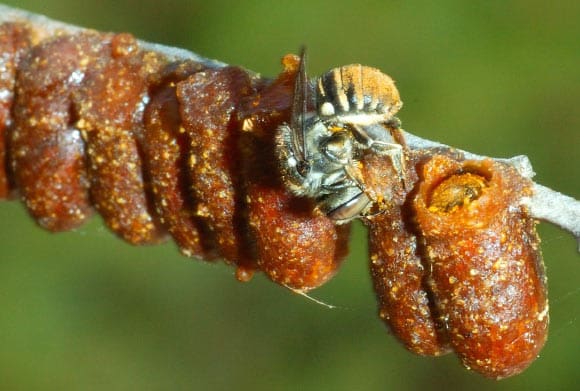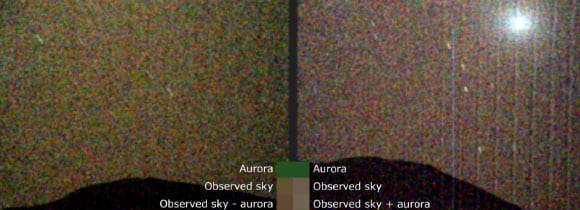The newly-discovered species belong to the rare bee subgenus Austrochile (genus Megachile). They construct brood cells from resin that are stuck individually to twigs or in clusters on the bark of trees. The authors therefore propose ‘resin pot bees’ as common name for the bees in this subgenus.

The resin pot bee species Megachile (Austrochile) tarltoni. Image credit: David Pike.
Resin pot bees are unique to Australia and present in every state and territory except Tasmania.
“The group was previously considered to contain seven species, and in 1992 an additional 18 were named,” said Dr. Remko Leijs, a researcher at the South Australian Museum.
“Over the years, we discovered a further 23 species during field collection trips, including during various Bush Blitz surveys, which look for the unknown and hence regularly result in the discovery of new invertebrate and plant species.”
“Bush Blitz, a partnership between the Australian Government, BHP Billiton and Earth Watch Australia, documents fauna and flora from selected national reserves.”
“It also provides funding for the description of new species, and this enabled us to compare the newly collected species to those present in Australian entomological collections.”
“This uncovered an additional 20 undescribed species, hidden in the collections, which highlights the importance of entomological collections as a repository for these kinds of discoveries.”
“There is still much to be discovered about Australia’s bees, and their vital role as pollinators,” added Dr. Katja Hogendoorn, a researcher at the University of Adelaide.
“Despite their environmental and economic importance as pollinators of native plants and crops, the Australian bee fauna is poorly understood.”
“An estimated one-third of bee species remains unknown to science, and dearth of funding for taxonomic work hampers our ability to assess the conservation status and undertake action to protect native bees.”
“We may be losing species that we don’t even know about yet.”
There are around 1,700 known native bee species in Australia.
The team’s discovery raises the number of known resin pot bee species to 78 — almost half of which are known from a single location only.
“More research is needed to understand what threats resin pot bees might be facing,” said Dr. James Dorey, a researcher at the University of Wollongong.
“These species are likely to have a limited distribution, but realistically, we don’t have enough information about their occurrence or population sizes to say much about their conservation status.”
The discovery is described in a new paper in the Australian Journal of Taxonomy.
_____
R. Leijs et al. 2025. The Australian Resin Pot Bees, Megachile (Austrochile) (Hymenoptera: Megachilidae), with descriptions of 71 new species. Australian Journal of Taxonomy 90: 1-119; doi: 10.54102/ajt.ek0f9


